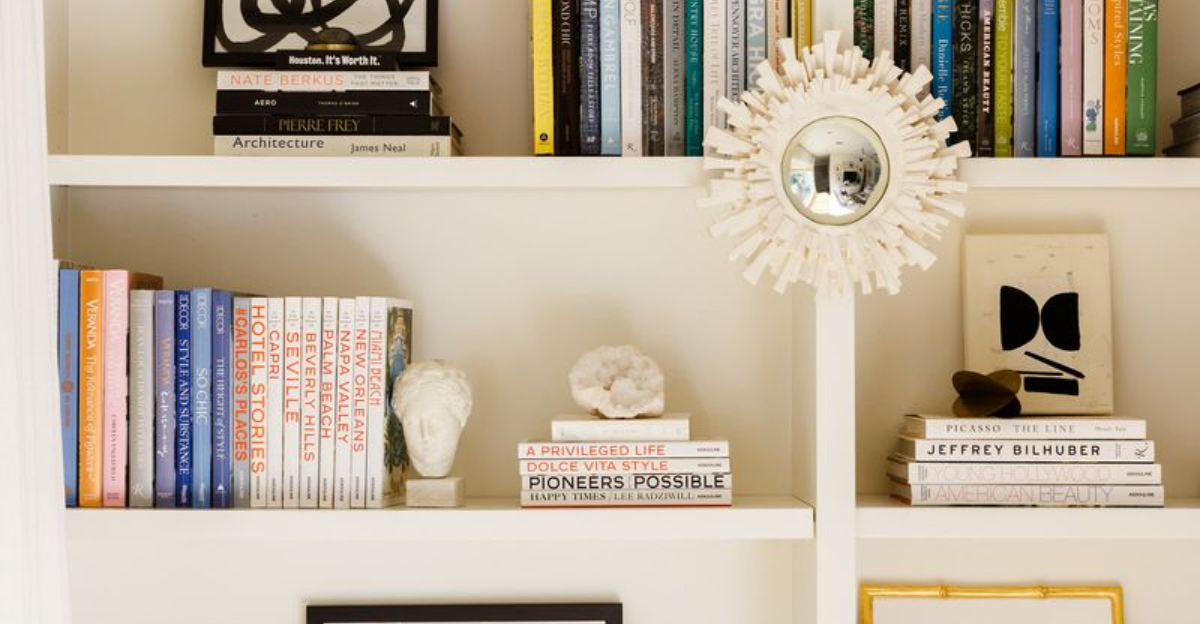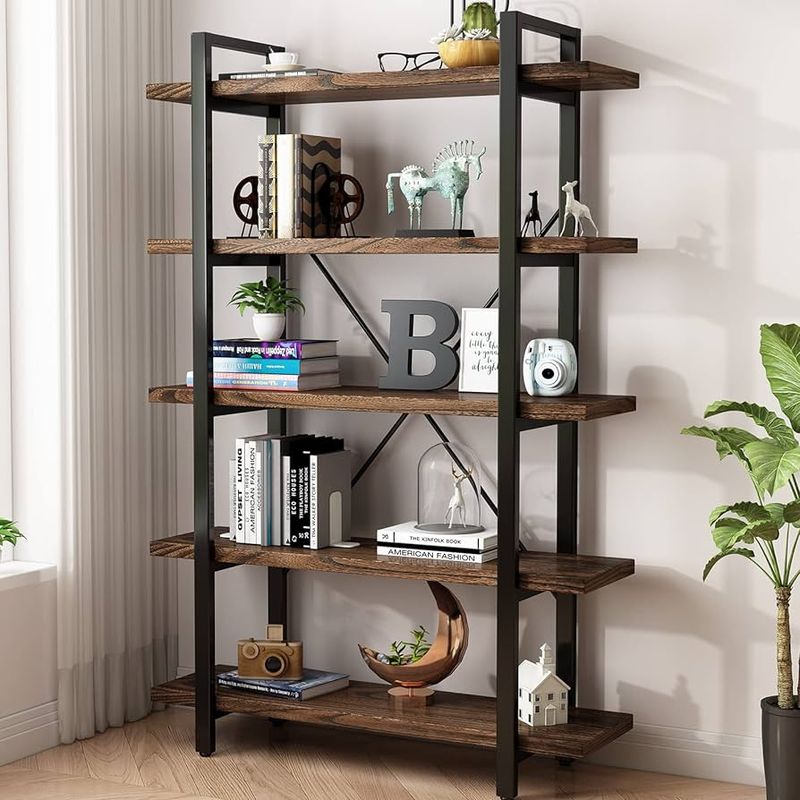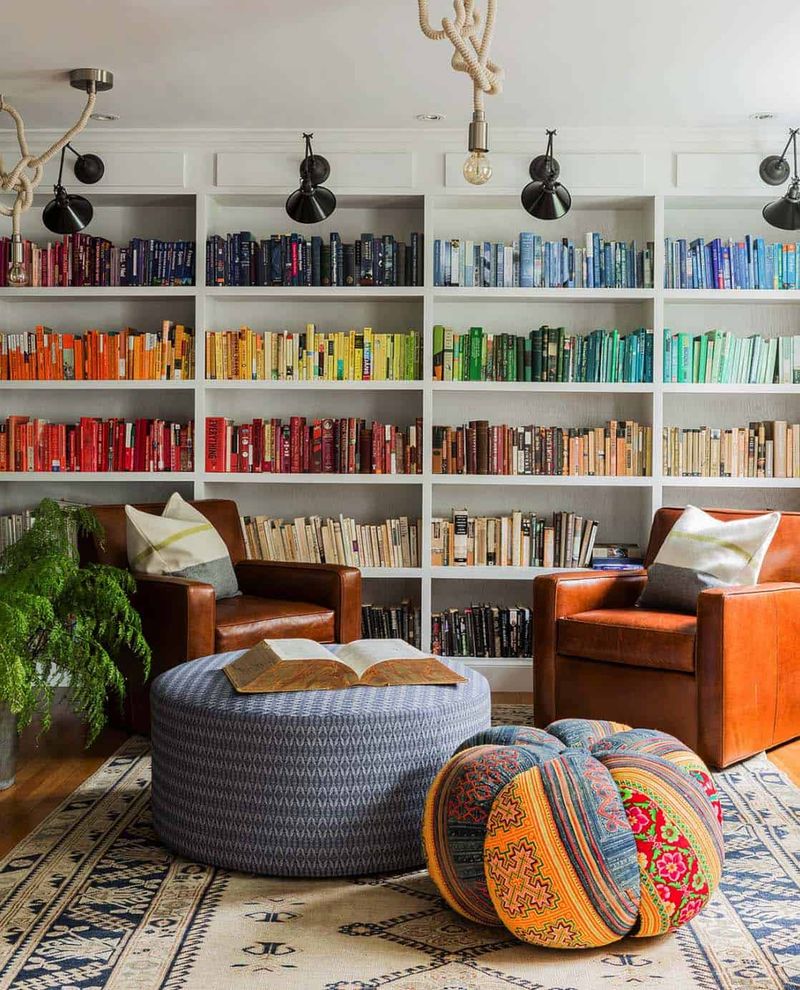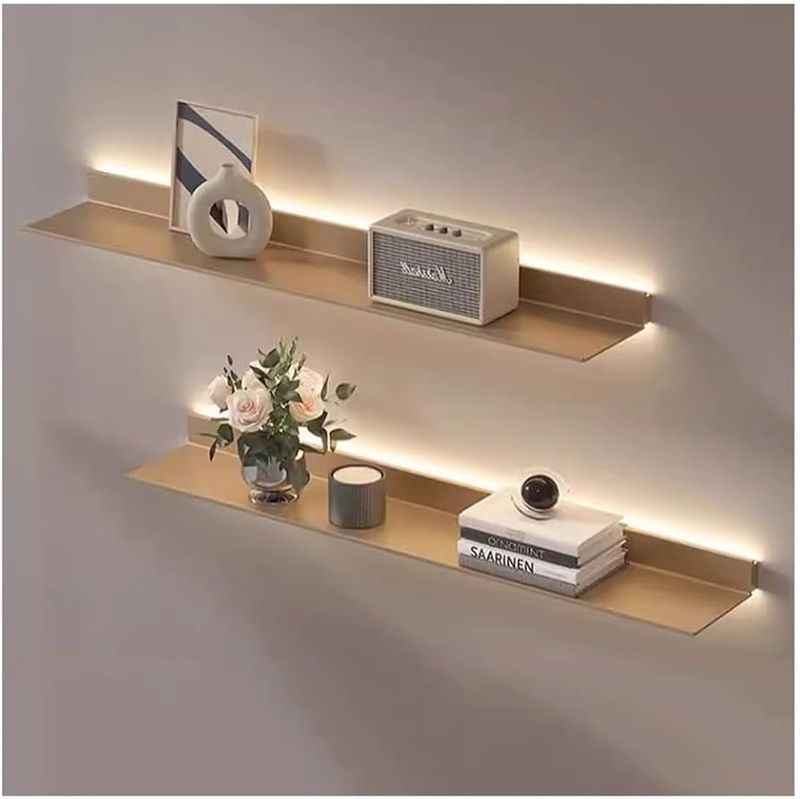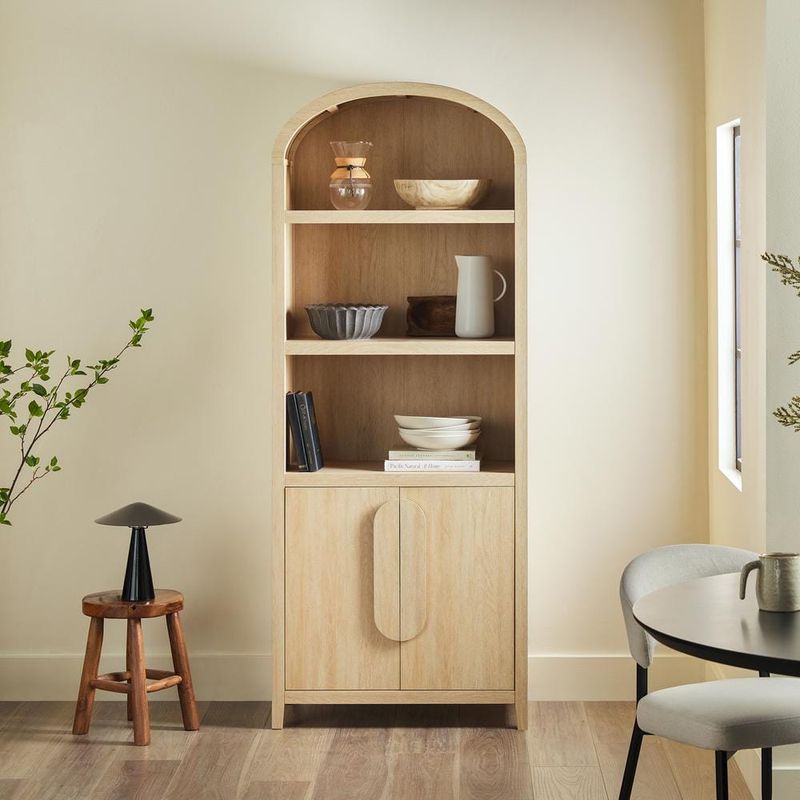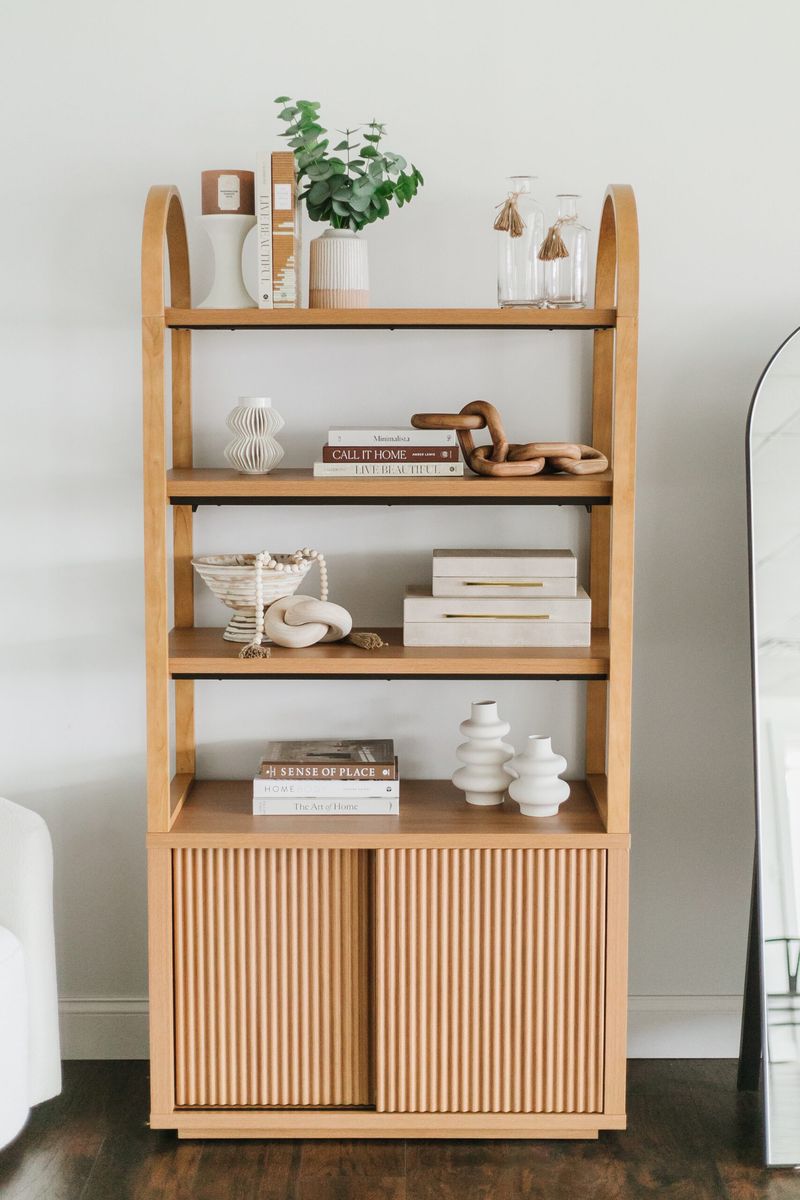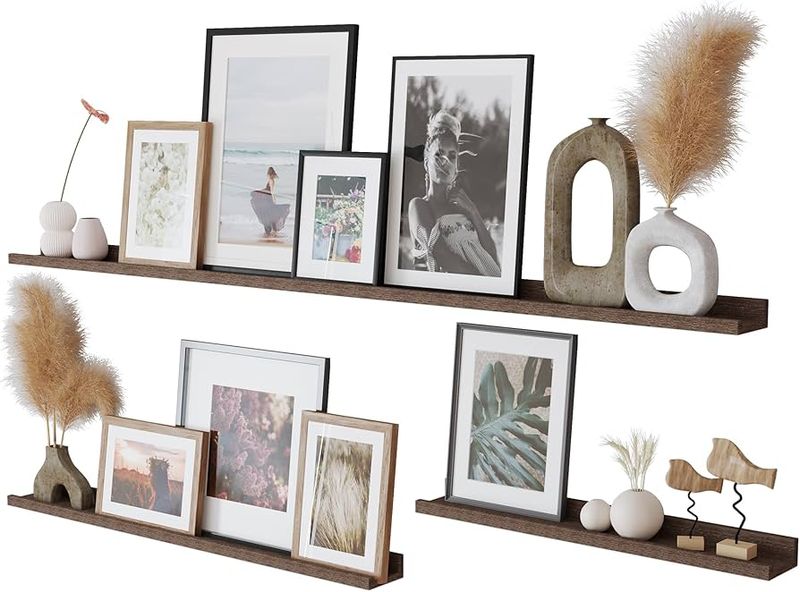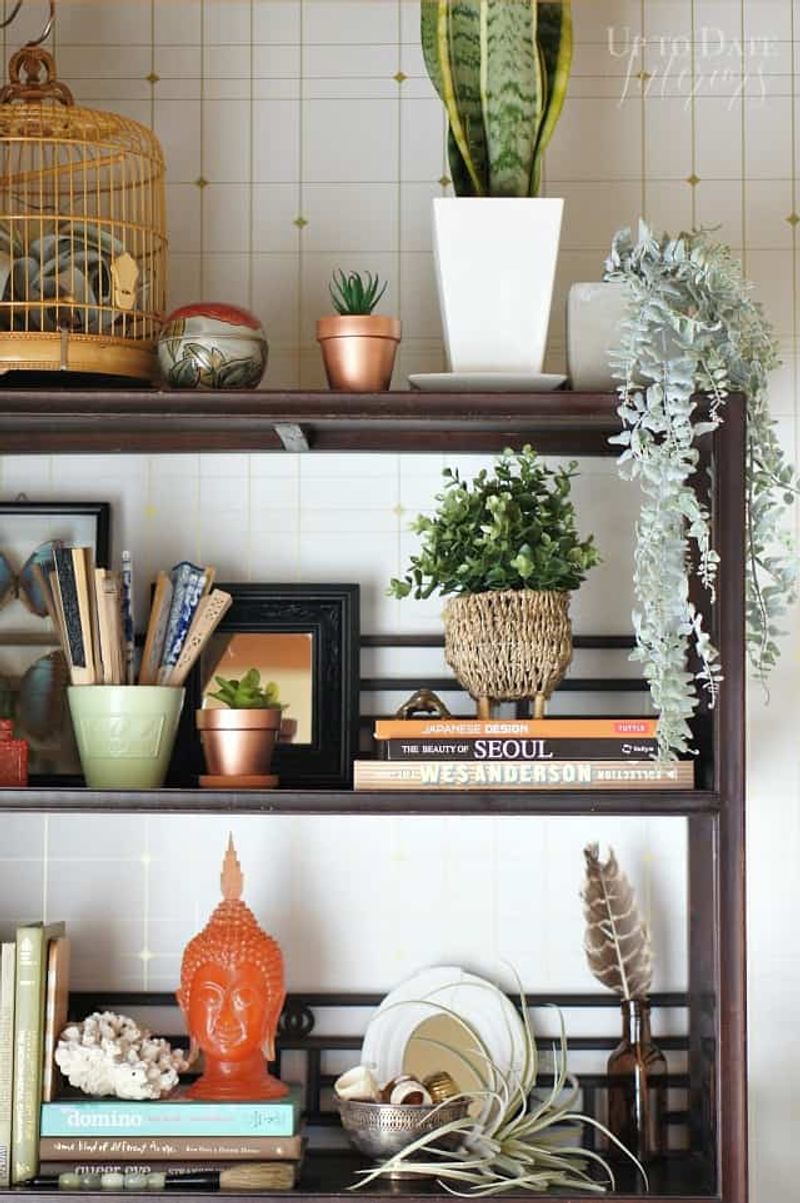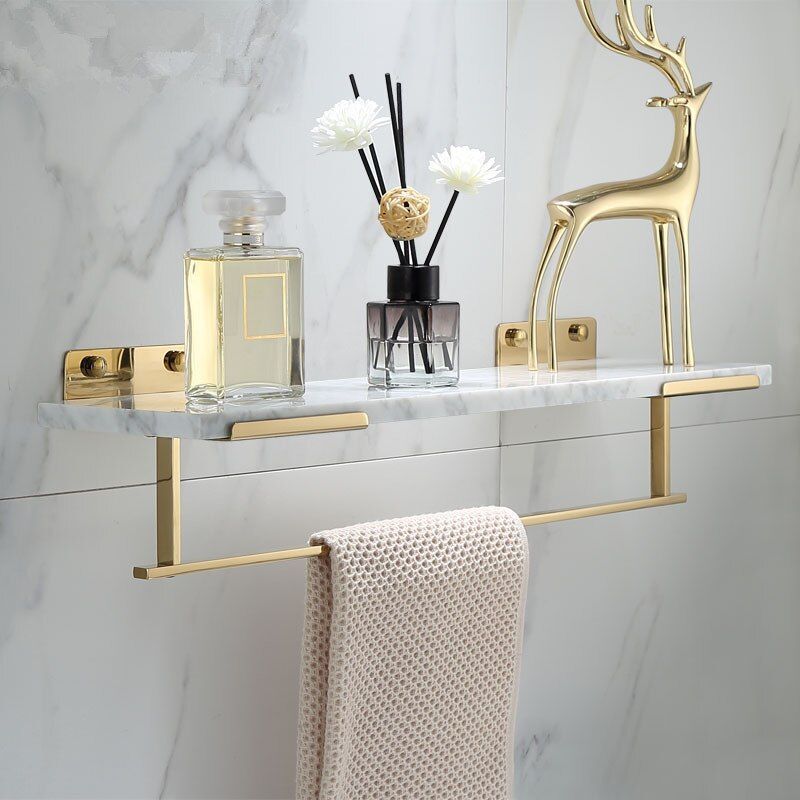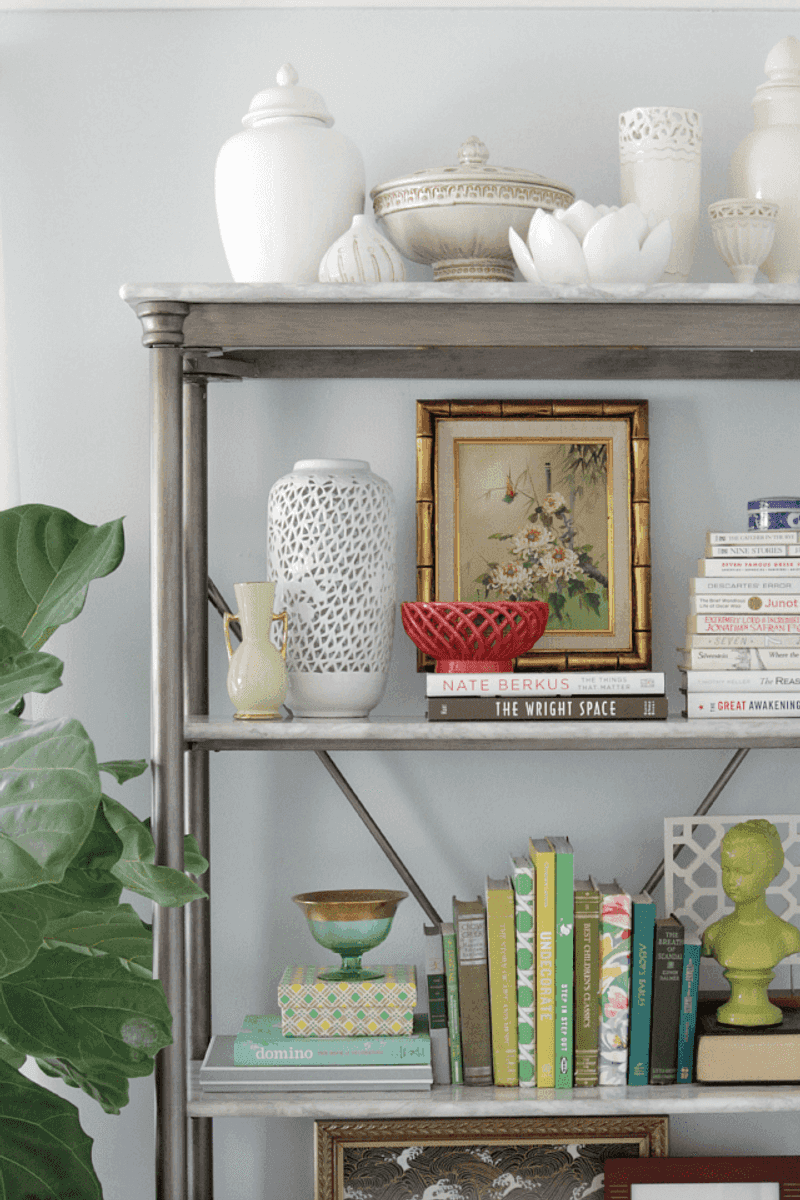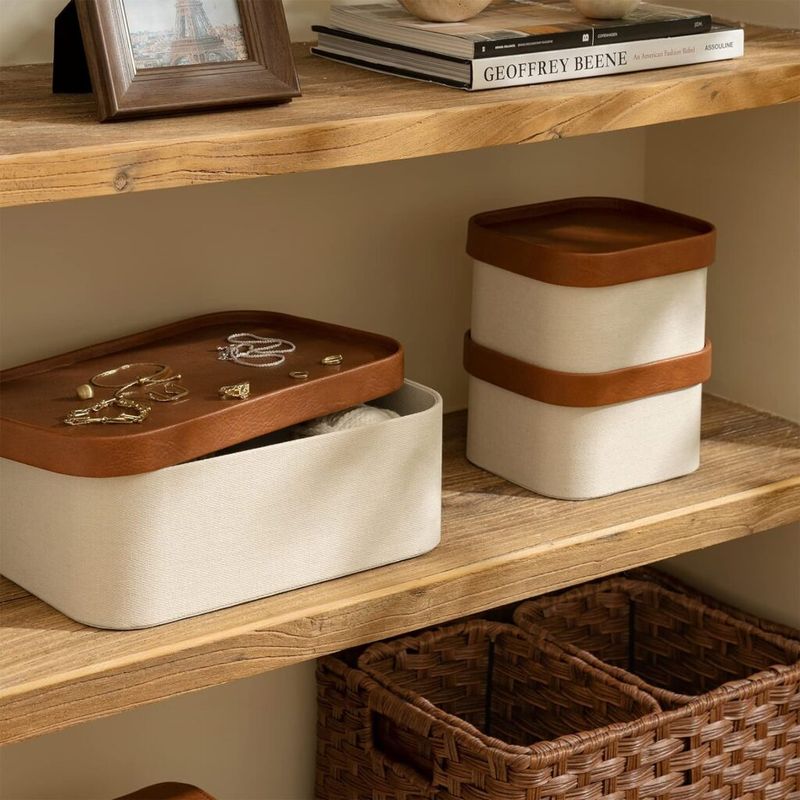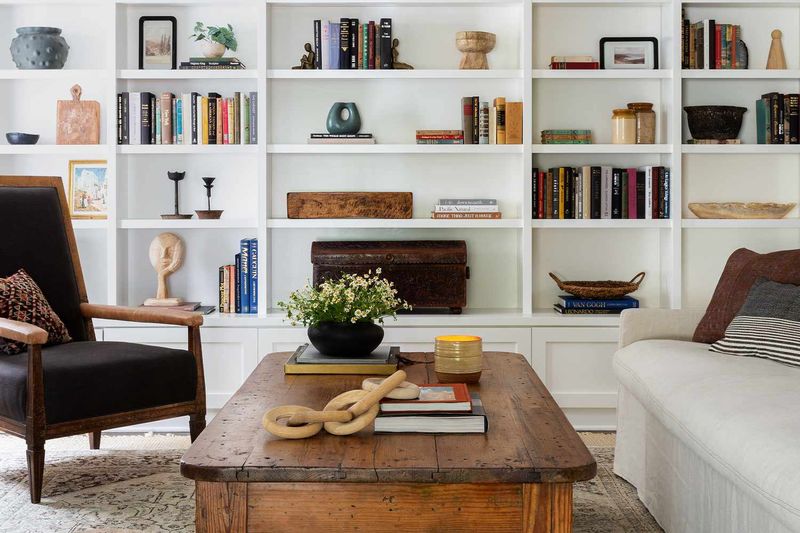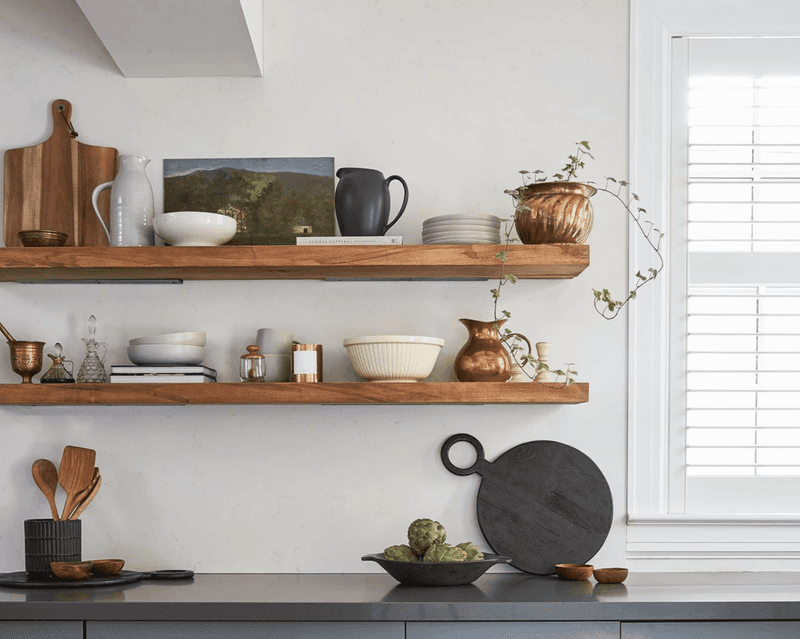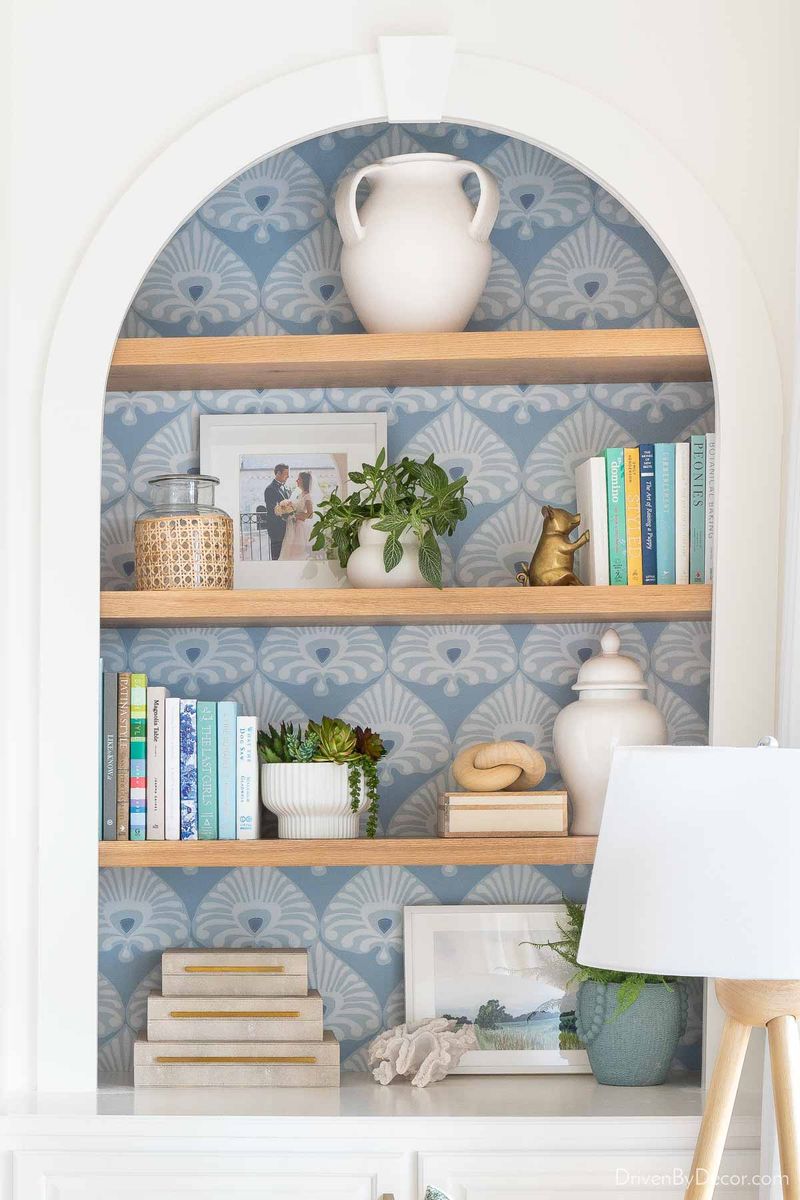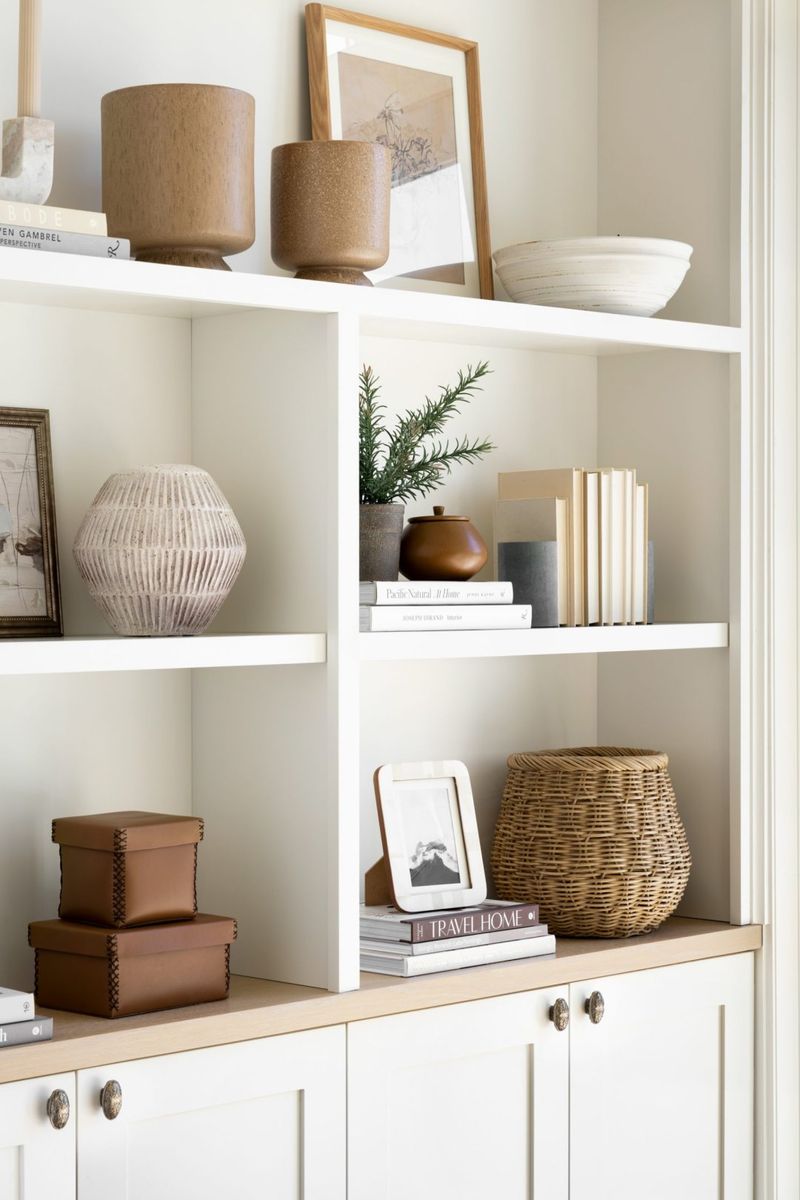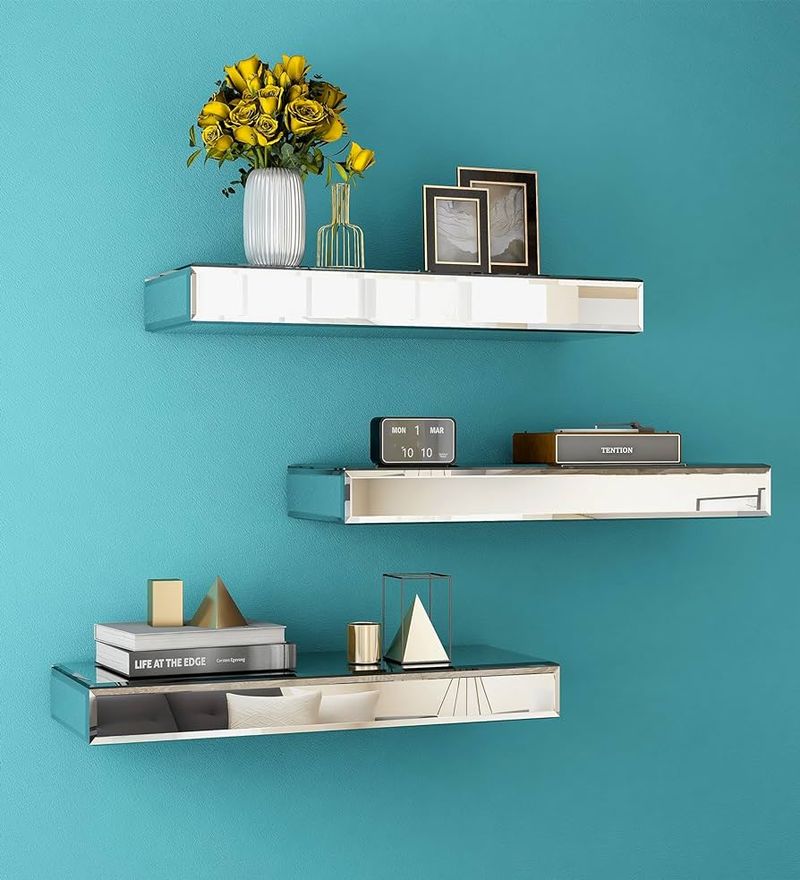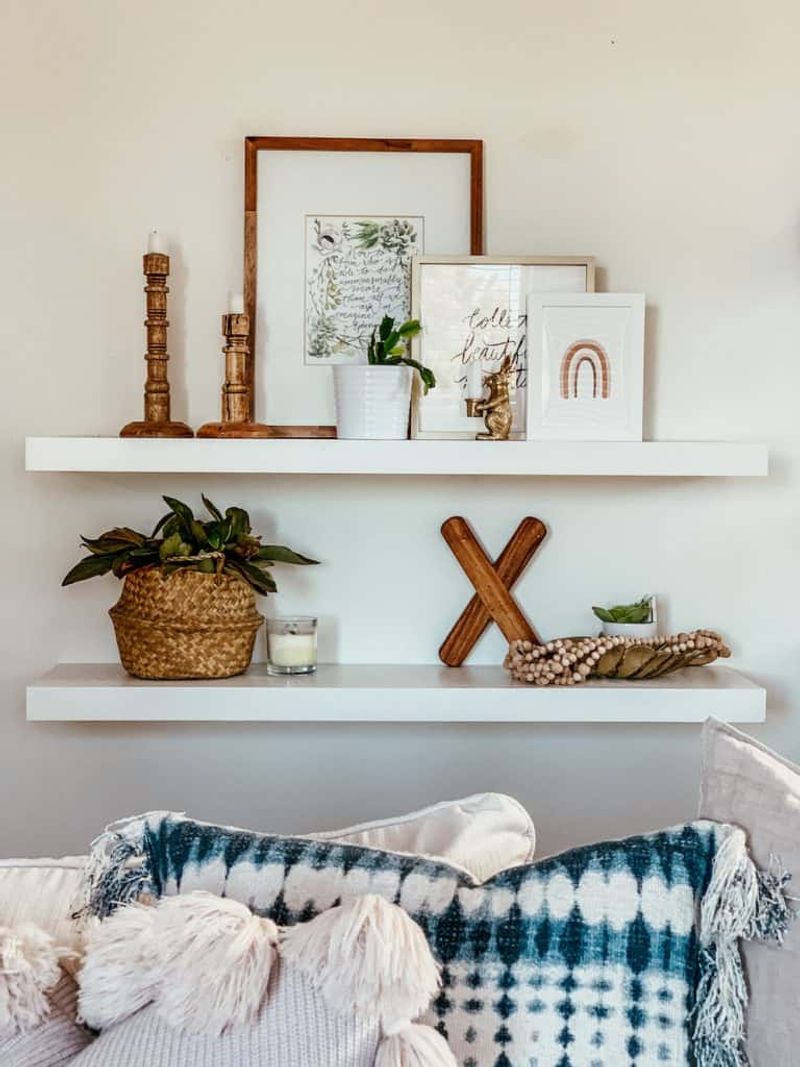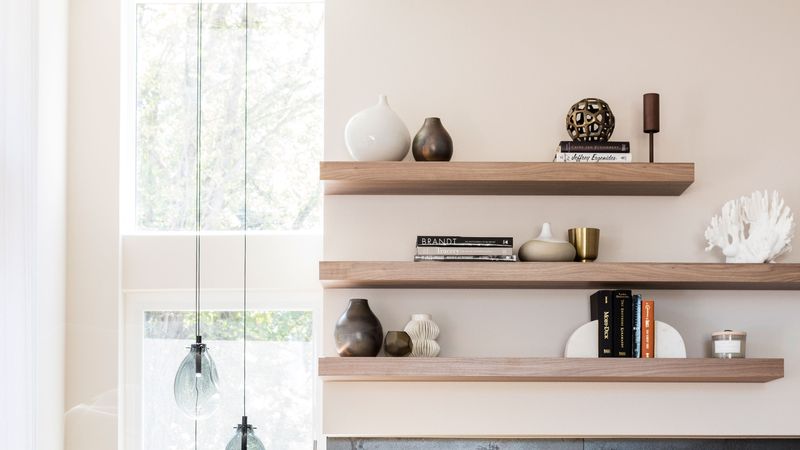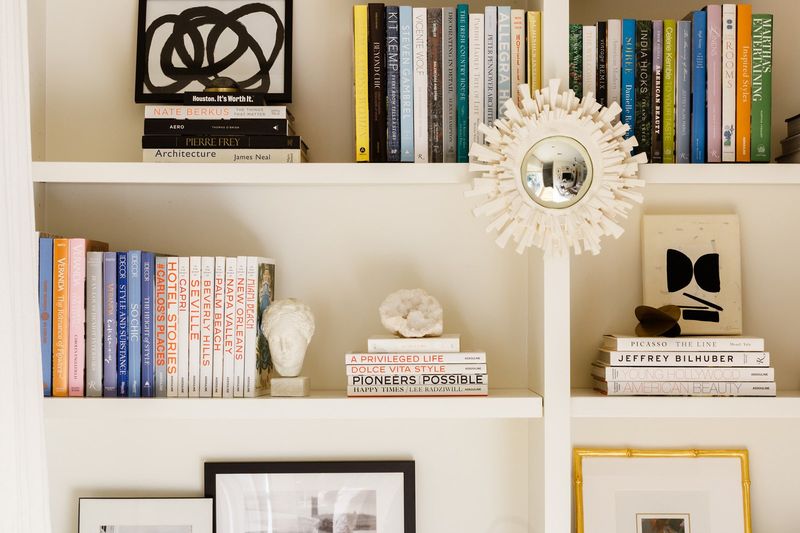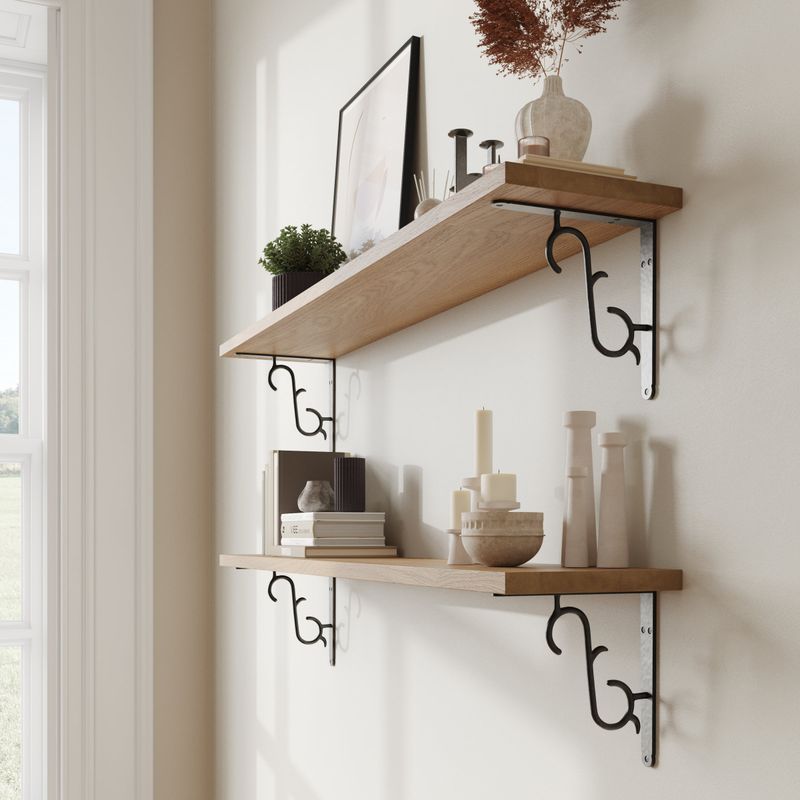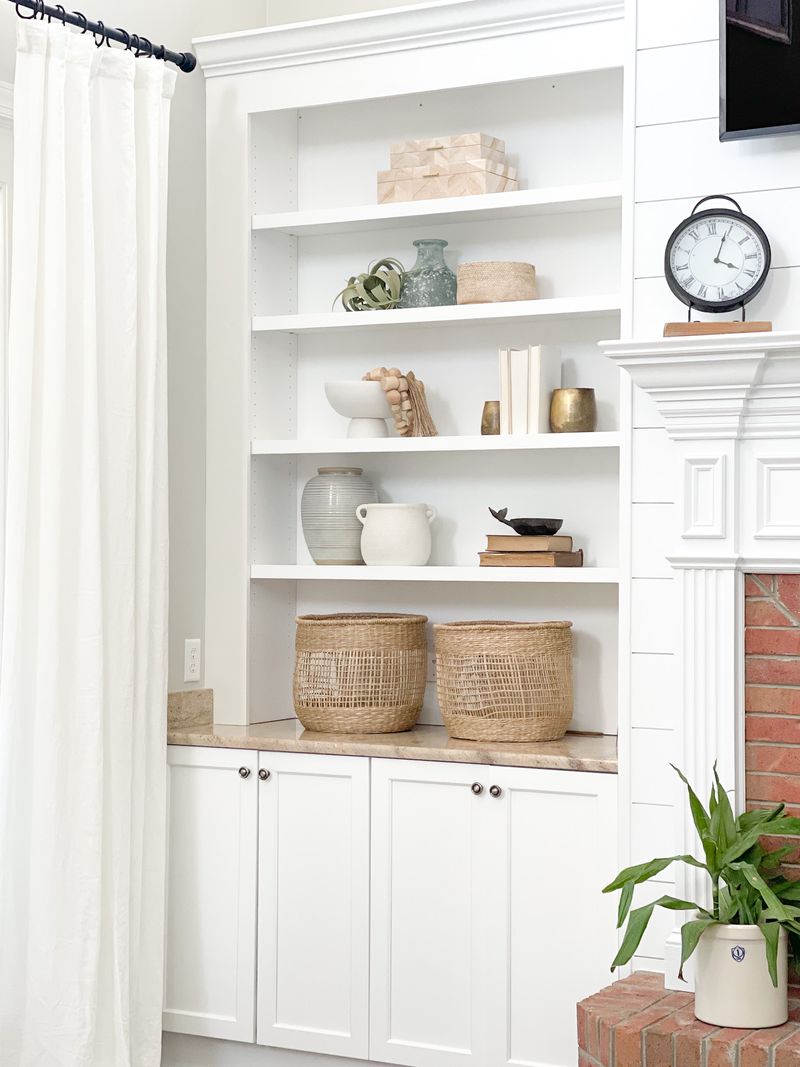Storage shelves don’t have to be boring or purely functional! With a few creative touches, you can transform ordinary shelving into stylish focal points that enhance your home’s décor.
Whether you’re working with built-ins, floating shelves, or freestanding units, there are countless ways to make your storage both practical and beautiful.
Let’s explore some stunning ideas that will elevate your shelving from merely useful to absolutely elegant.
1. Mix Materials for Visual Interest
Combining different materials creates depth and character that plain shelving simply can’t match. Try pairing warm wood with sleek metal brackets, or marble shelving with brass supports. The contrast between textures immediately elevates the look, giving your storage a custom, designer feel.
Even budget shelves can look high-end with this approach! For an especially striking effect, consider incorporating glass elements alongside more substantial materials – the transparency adds an airy quality while maintaining the sophisticated vibe.
2. Create a Cohesive Color Scheme
Color coordination works wonders when styling shelves! Instead of random items creating visual chaos, select pieces that share a complementary palette with your room’s existing colors. You might arrange books by color or choose decorative objects in specific hues that enhance your space.
This doesn’t mean everything must match perfectly – variations within a color family actually add richness and dimension. For a particularly sophisticated look, try monochromatic styling with different shades of the same color, creating a layered effect that feels intentional and refined.
3. Incorporate Strategic Lighting
Lighting transforms ordinary shelves into magical displays! Small LED strip lights installed underneath each shelf create a warm glow that highlights your treasured items and adds depth to the entire wall. For a more dramatic effect, consider puck lights focused on specific display pieces.
These targeted beams draw attention to your most beautiful objects while creating interesting shadows and dimension.
Battery-operated options make this upgrade possible even without nearby outlets, while smart lighting systems allow you to adjust brightness and even color temperature to match different moods or occasions.
4. Balance Open and Closed Storage
Finding the sweet spot between display and concealment is key to elegant shelving. While open shelves showcase beautiful items, too many visible possessions can create visual clutter. Consider units that combine open shelving with cabinet doors or drawers.
The contrast between open and closed sections also creates architectural interest, making the entire unit feel more like a custom-designed feature than simple storage.
5. Frame Collections with Negative Space
Breathing room makes all the difference when arranging shelves! Rather than filling every inch, leave intentional empty spaces around special items or groupings to create visual “frames” that highlight your collections. This approach prevents the cluttered look that makes shelves appear disorganized and chaotic.
Think of each shelf as a mini gallery wall with its own composition and balance. For maximum impact, arrange larger items toward the outer edges with smaller pieces toward the center, creating a natural visual flow that guides the eye through your carefully curated display.
6. Integrate Art and Photographs
Who says art belongs only on walls? Leaning framed pieces against the back of shelves creates depth and personal connection that transforms ordinary storage into a gallery-like display. Vary the sizes and orientations of your frames for a collected-over-time feel.
Black and white photographs look particularly sophisticated, though colorful art can add wonderful energy when it complements your overall color scheme.
For an extra designer touch, try overlapping smaller frames slightly or placing tiny art pieces in unexpected spots – these thoughtful details make your shelving feel professionally styled.
7. Add Natural Elements
Bringing the outdoors in instantly elevates shelf styling! Small potted plants, especially varieties with interesting shapes like succulents or trailing vines, add life and organic movement to rigid shelving structures.
Beyond plants, consider incorporating other natural materials – a collection of interesting stones, driftwood pieces, or dried botanical elements. For low-maintenance options, high-quality faux plants can work beautifully, especially when mixed with authentic natural elements like wooden bowls or woven baskets.
8. Showcase Luxury Materials
Certain materials instantly communicate elegance and refinement. Consider incorporating small elements of marble, brass, crystal, or velvet into your shelf displays for immediate sophistication. A marble bookend, brass figurine, or crystal vase doesn’t have to break the bank but adds a high-end feel.
These luxury touches reflect light beautifully and create visual highlights across your shelving. For maximum impact, limit these special materials to a few strategic pieces rather than overwhelming the space – their presence will be more noticeable when they’re not competing with too many similar items.
9. Create Depth with Layering
Flat, one-dimensional arrangements lack the sophisticated depth that makes shelving truly interesting. Instead of lining everything up at the front edge, try positioning some items further back while bringing others forward.
Small framed art or mirrors can lean against the back wall while decorative objects sit in front. Books can be stacked both horizontally and vertically to create platforms for smaller items at varying heights.
10. Invest in Beautiful Storage Containers
Everyday items become display-worthy when housed in attractive containers! Replace cardboard boxes and plastic bins with woven baskets, decorative boxes, or fabric-covered storage cubes that complement your décor.
For a cohesive look, choose containers with similar materials or colors but varying textures and sizes. Labels can be elegant too – consider leather tags, brass label holders, or handwritten cards in beautiful calligraphy to identify contents without sacrificing style.
11. Arrange Books Creatively
Books aren’t just for reading – they’re design elements too! Beyond traditional vertical arrangement, try horizontal stacking with decorative objects placed on top. This creates natural platforms at different heights for displaying smaller items.
For a particularly elegant look, remove paper dust jackets to reveal the often more attractive bound covers underneath. Don’t feel obligated to display all spines outward either – turning some books so their pages face forward creates textural interest and a softer, more neutral backdrop for colorful decorative pieces.
12. Maintain Consistent Spacing
Rhythm and repetition create a sense of intention that reads as elegance. When installing multiple shelves, keep the spacing between them consistent – this simple detail makes even inexpensive shelving look custom-designed.
For existing shelves with adjustable heights, take time to measure and create equal distances. The resulting visual harmony immediately elevates the entire wall.
If you need varied heights to accommodate different items, try creating a symmetrical pattern – for example, two tall spaces on the ends with three shorter spaces in the middle – maintaining balance while allowing for practical storage needs.
13. Paint Shelf Backs in Accent Colors
A pop of unexpected color can transform ordinary shelving into a statement piece! Painting just the back wall of shelving units in a bold hue or rich neutral creates a beautiful backdrop that makes displayed items stand out. For a subtle approach, choose a slightly darker shade of your wall color.
More adventurous decorators might opt for complementary colors or even patterns created with wallpaper or stencils. This technique works equally well with built-ins and freestanding units, adding depth and intentionality to your storage while creating a cohesive connection to your overall color scheme.
14. Group Similar Items Together
Collections gain power when displayed together! Rather than scattering similar items throughout your shelves, group them to create visual impact and tell a cohesive story about your interests and style.
Whether it’s vintage cameras, ceramic vessels, or travel souvenirs, unified collections immediately look purposeful and curated. Vary the heights and sizes within each grouping to create visual movement and interest.
15. Incorporate Mirrors and Reflective Surfaces
Magic happens when light bounces around your shelving! Small mirrors placed strategically at the back of shelves reflect light and create the illusion of greater depth, making your space feel larger and more luxurious.
Beyond traditional mirrors, consider metallic objects, glass containers, or lacquered boxes that add subtle reflective qualities.
For a particularly elegant effect, try placing candles or small lamps near reflective objects – the doubled glow creates a warm, sophisticated ambiance perfect for evening entertaining.
16. Scale Decorative Objects Appropriately
Size matters tremendously when styling shelves! Too many small items create visual clutter, while oversized pieces can overwhelm the space. The secret lies in varying scale while keeping everything proportional to the shelf dimensions.
As a general rule, aim for decorative objects that reach about two-thirds the height of the shelf for proper proportion. Mix in medium and smaller items for variety, but always include at least one substantial piece per shelf to anchor the arrangement.
17. Add Texture Through Varied Materials
Tactile variety creates visual richness that elevates ordinary shelving to designer status! Combine smooth ceramics with rough-hewn wood, sleek metal with soft textiles, or glossy books with matte picture frames. These textural contrasts create depth and dimension even when working within a limited color palette.
Even when items share similar colors, these textural differences create subtle highlights and shadows that add sophistication and prevent the flat, one-dimensional look that makes shelving appear ordinary.
18. Implement a Visual Rhythm
Professional designers know that repetition creates harmony! Establishing a visual pattern across your shelving – whether through repeated colors, shapes, or materials – creates a sense of intentional design that reads as elegant rather than random.
Try placing similar items at regular intervals across multiple shelves, creating a zigzag or diagonal pattern that guides the eye through the entire unit. This technique works particularly well with colorful book spines or matching decorative objects.
19. Customize with Decorative Hardware
Hardware functions like jewelry for your shelving! Replacing standard brackets or drawer pulls with unique, high-quality alternatives instantly elevates the entire unit from basic to beautiful.
For floating shelves, consider decorative brackets in brass, matte black, or brushed nickel that complement your room’s existing metal finishes. On cabinet-style shelving units, upgraded knobs or handles in interesting materials like leather, crystal, or hand-painted ceramic add personality and polish.
20. Create Balance Without Symmetry
Perfect symmetry can feel static and formal, while complete randomness appears chaotic. The sweet spot? Balanced asymmetry – the art of creating visual equilibrium without mirror-image arrangements. Try placing a larger item on one side of a shelf balanced by a cluster of smaller objects on the opposite side.
This approach feels more collected and natural while still maintaining the refined, intentional look that defines elegant styling. Think of each shelf as having an invisible scale – the visual “weight” should feel evenly distributed even when the specific items differ in size, color, or number.

